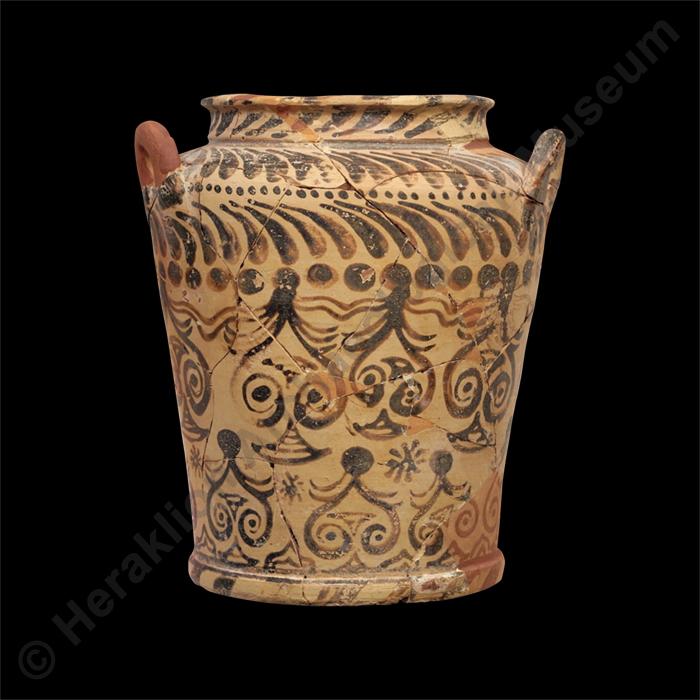Pyxis-shaped vessel
Π5406
Clay
Incomplete, mended and restored.
Height: 14.5 cm. Rim diameter: 9 cm.
Pseira
G7, Room 1
Late Bronze Age. Neopalatial period, Late Minoan ΙB period.:
1500-1450 BC:
Gallery:
VCase:
47Exhibition thematic unit:
Late Bronze Age - Neopalatial period (1700-1450 BC). The New Palaces. The zenith of Minoan civilisationSettlements of East Crete
Description
This small, almost cylindrical vessel from Pseira is a refined example of the pottery production of the Late Minoan IB period. It has a short neck, a distinct flange, perhaps for a lid, and two tall carrying handles. It may have been used as a pyxis, a container for small, perhaps valuable items, or small amounts of solid substances. Its dark-on-light decoration is typical of the Special Palatial Tradition of the period, in both themes and composition. On the neck and upper body are stylised foliate bands, while the main body is adorned with two rows of repeated stylised plant motifs resembling pendant ivy leaves, with spiral tendrils and papyrus-shaped tops. Despite the strongly symmetrical arrangement of the themes, and the ornamentation and stylisation of this version of the Floral Style of vase-painting, the composition is still a lively one, due to the sense of movement inspired by the curving motifs as they “float” harmoniously in the space. Such stylised plant motifs are particularly popular in other art forms of the period such as large-scale painting, metalwork and jewellery.Bibliography:
Seager, R.B. Excavations on the island of Pseira, Crete. The University of Pennsylvania Museum Anthropological Publications 3.1. Philadelphia, 1910, 30, fig. 11. Betancourt, P.P. The History of Minoan Pottery. Princeton, 1985, 204, fig. 109.Author:
I. N.Photographs' metadata
